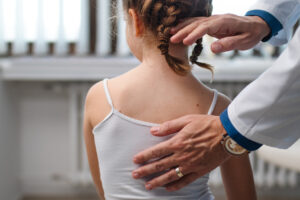Right now, throughout New Jersey, most of us are getting ready to enjoy some family time at the pool or beach. When you have children around water, there is always the need to keep a careful eye on your little ones, which can be a big challenge. Drowning is the number one cause of death in children four and younger. Children can drown very quickly and quietly, even while swimming in a pool with other people. The TV images we have of people splashing in the water and calling for help are simply not the entire reality.
Parents need to be vigilant to keep watch over their children when they are in the pool, ocean, hot tub or even bath tub. Leaving kids alone for just a moment to go grab the phone is not an option. Sometimes, youngsters find their way into the water, go under ─ just for a few seconds ─ and take in water which is not immediately coughed out.
Many parents have never heard of “secondary drowning,” also known as “delayed drowning,” but it can happen in a bathtub, hot tub, pool or the ocean. Oftentimes, parents find out too late that their child, even briefly submerged in water, can drown hours or days later. In the most severe cases, parents put their kids to sleep with residual fluid still in the lungs and they eventually drown in their sleep.
Drowning out of water
Drowning is the process of experiencing respiratory impairment from submersion in liquid resulting in eventual death. It can happen so quietly, quickly and easily ─ a small amount of inhaled fluid acts as an irritant, causing inflammation and leakage of additional liquid into the lungs. Up to 72 hours after inhaling water, the body can respond by pushing even more liquid into the lungs, reducing the ability to breathe and leading a person to drown in their own body fluids.
Symptoms
Secondary drowning most commonly occurs an hour to 24 hours after the incident. If your child takes in water and continues to cough a few hours later or seems to be having difficulty breathing, seek emergency care immediately. Additional symptoms include lethargy or unusual tiredness, pain in the chest, sore throat and pale or blue/grey skin color.
Treatment for this condition is simple but critical. First, the fluid must be removed from the lungs. Thereafter, the patient receives oxygen to reinvigorate the lungs to full capacity.
Where to find high quality pediatric emergency care
CentraState Medical Center recognizes that children benefit most from seeing pediatricians—physicians specially trained in children’s health—especially for an emergency. That’s why pediatricians staff and offer pediatric diagnosis and treatment at CentraState’s Emergency Department around the clock, seven days a week.
This separate and less intimidating department provides a special treatment area reserved exclusively for children which is overseen by an on-site pediatrician. The department offers First Care service to quickly treat minor pediatric injuries in less than 30 minutes. The hospital guarantees that all ED patients will be seen by a nurse within 15 minutes and a physician or practitioner within 30 minutes. For more information about CentraState’s pediatric services, call (866) CENTRA7.
 Sanjay Mehta, DO is the division chief of the Pediatric Emergency Department at CentraState Medical Center. For more information on emergency services, please call 866-CENTRA7.
Sanjay Mehta, DO is the division chief of the Pediatric Emergency Department at CentraState Medical Center. For more information on emergency services, please call 866-CENTRA7.





